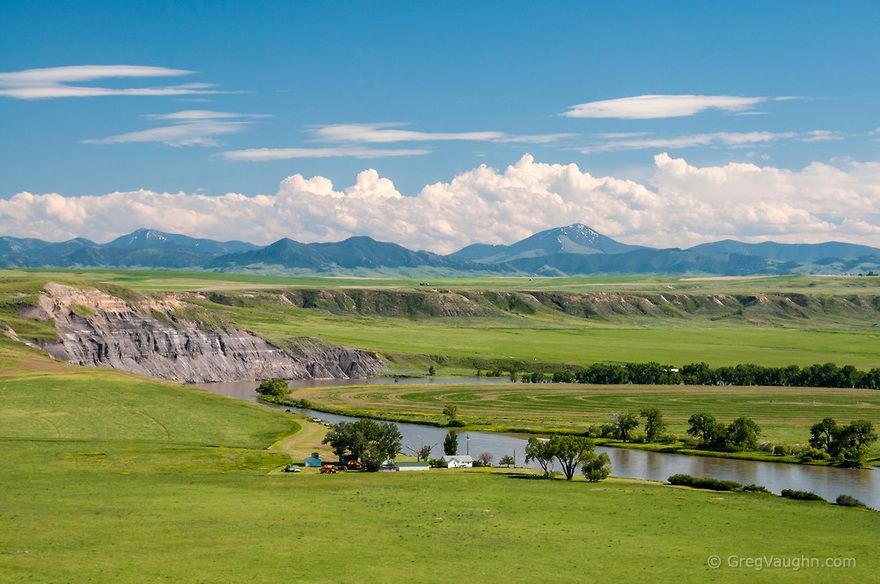The following is a summary of an undergraduate research project conducted by Benjamin Moscona-Remnitz, an economics student at Montana State University. This work was supported by the Undergraduate Research Scholarship Program of the Initiative for Regulation and Applied Economic Analysis.
Farmland represents a primary store of wealth in rural economies and accounts for the majority of US farm sector assets. At both national and more localized levels, there has been a recent uptick in concern over foreign ownership of domestic assets, with particular emphasis on farmland. This blog post will consider trends and patterns in foreign agricultural land ownership in Montana. Data for this post were obtained through a Freedom of Information Act request for the Agricultural Foreign Investment Disclosure Act (AFIDA) database on foreign farmland ownership in the U.S. The dataset, which covers 1978-2018, was assessed for outliers and checked for accuracy against the annual AFIDA summary reports published by the US Department of Agriculture’s Farm Service Agency. Although the dataset contains observations dating to the early 1900s, the mandatory disclosure requirements brought about by AFIDA were not in place until 1978, so we focus only on post-1978 trends.
Foreign-owned agricultural acreage has risen substantially over the past two decades, but still accounts for a very small share of total US farmland. As of the end of 2018, there are 31.6 million acres of foreign-held farmland and forestland in the US, accounting for approximately 3.5% of all US farmland. Note that this is also likely an overestimate of the percentage of farmland owned by foreign entities, since most forestland is not found in farms. In Montana, 697,590 acres (1.2%) of land is owned by foreign entities, indicating that foreign ownership of agricultural land is relatively less common here than in the broader US.

Figure 1 displays cumulative foreign-owned acreage in Montana over the 1978-2018 period. Foreign-owned acreage is split into five land-use categories: crop, pasture/range, other agricultural use, forest, and non-agricultural use. In Montana, pasture/range is clearly the dominant type of land purchased by foreign interests, with cropland also occupying a non-trivial share of total foreign-owned land. By comparison, foreign-held forest, other agricultural land, and non-agricultural land comprise a negligible total acreage. Montana’s foreign-held pasture/range lands make up a significant portion of US foreign-owned pasture/range acreage (~8%). Montana has very little foreign investment in forest acreage. Foreign investment in forestlands are primarily concentrated in the Northeast, where Canadian entities own large swaths of timberland in Maine.

Figure 2 shows the county-level proportion of agricultural acreage under foreign ownership. Grey counties have no records of foreign ownership in the AFIDA dataset. The county-level total land in farms was sourced from the 2017 Census of Agriculture. Glacier County has the highest proportion of foreign agricultural ownership in Montana, at 6.40%, followed by Wheatland (5.84%), Rosebud (5.32%), Flathead (4.29%) and Granite (3.55%). If we look at total foreign-owned acreage by county, Rosebud County is the largest (145,233 ac), followed by Glacier (71,898 ac), Big Horn (61,693 ac), Wheatland (50,277 ac), and Garfield (37,078 ac).

So, who actually owns foreign-held agricultural land in Montana? Table 1 shows the top 10 foreign nations invested in Montana agricultural land. According to the AFIDA data, entities from Belgium, with 222,716 acres, are responsible for the largest share of Montana’s foreign-held agricultural land. Apart from Canada, at 147,878 acres, no other foreign nation holds more than 100,000 acres of Montana’s farmland.
When considering trends in foreign farmland ownership, many are quick to jump to conclusions about issues of national security, food security, and follow a general sentiment that is anti-foreign investment when it comes to U.S. agriculture. There are various reasons behind why foreign investors may be interested in US farmland. In the Midwest, for example, a significant proportion of foreign investment over the past twenty years has gone to the development of wind and solar farms. Previous research has also shown that outside investment in farmland tends to rise when the broader economy goes sour. However, the fact remains that, even after a rapid rise in foreign ownership in recent decades, relatively little farmland is owned by non-domestic entities, suggesting that this trend played a minimal role, if any, in shaping aggregate farmland price trends over the same period.


1 Comment
Pingback: Foreign ownership of Montana's ag land has increased, but remains low | Northern Ag Network